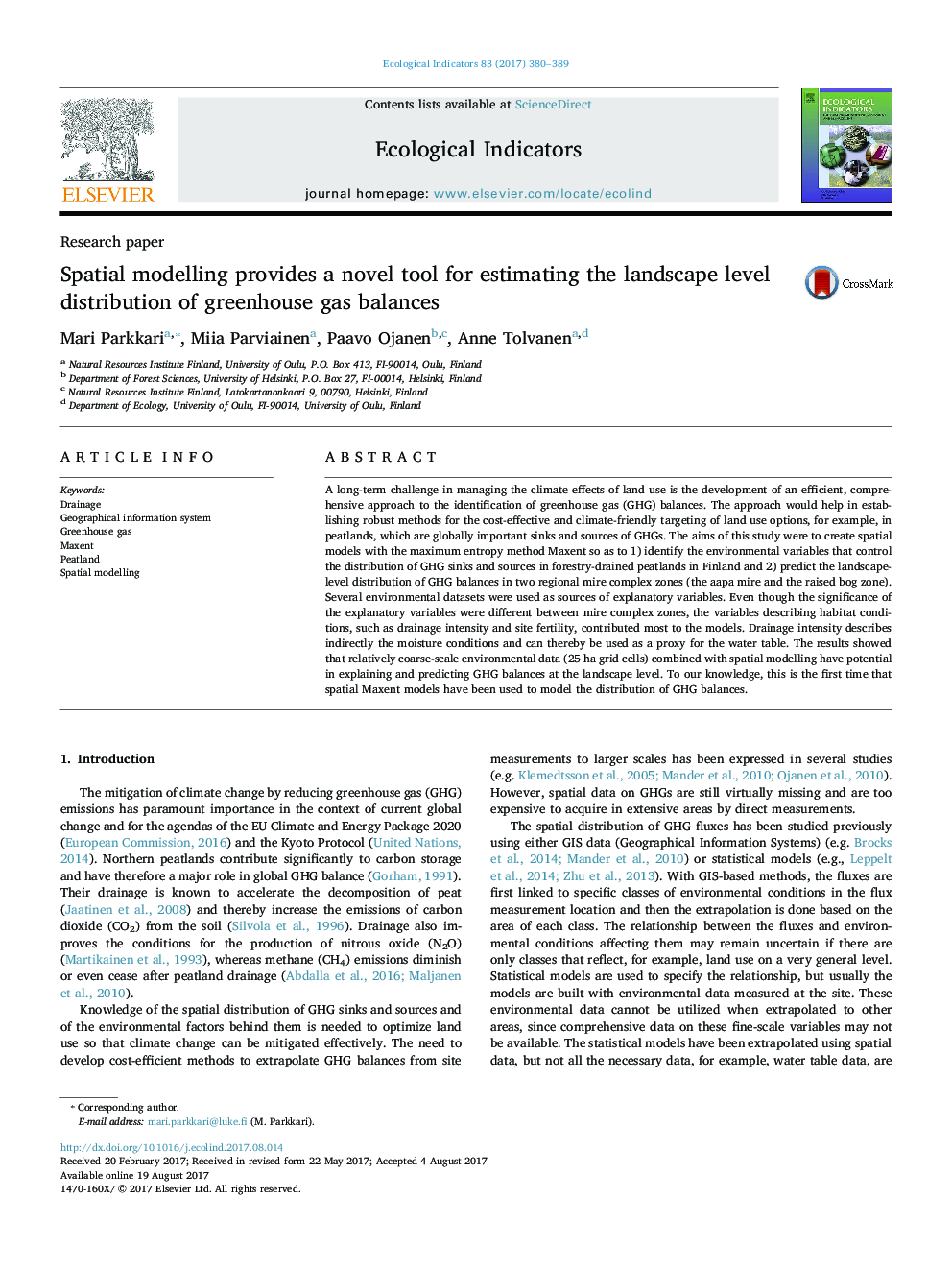| Article ID | Journal | Published Year | Pages | File Type |
|---|---|---|---|---|
| 5741508 | Ecological Indicators | 2017 | 10 Pages |
â¢The aims were to create spatial models with the maximum entropy method Maxent and environmental datasets to 1) identify the environmental variables that control the distribution of GHG sinks and sources in forestry-drained peatlands in Finland and 2) predict the landscape-level distribution of GHG balances in two regional mire complex zones.â¢The results showed that relatively coarse-scale environmental data (25 ha grid cells) combined with spatial modelling have potential in explaining and predicting GHG balances at the landscape level.â¢The variables describing habitat conditions, such as drainage intensity and site fertility, contributed most to the models and the landscape-scale relationships between the environmental variables and GHG balances are analogous to those found in previous studies at site level.â¢The produced distribution maps were reasonable and the developed method can be applied to landscape-level land use-planning and to direct different land use options to areas in a way that promotes climate change mitigation.â¢To our knowledge, this is the first time that spatial Maxent models have been used to model the distribution of GHG balances.
A long-term challenge in managing the climate effects of land use is the development of an efficient, comprehensive approach to the identification of greenhouse gas (GHG) balances. The approach would help in establishing robust methods for the cost-effective and climate-friendly targeting of land use options, for example, in peatlands, which are globally important sinks and sources of GHGs. The aims of this study were to create spatial models with the maximum entropy method Maxent so as to 1) identify the environmental variables that control the distribution of GHG sinks and sources in forestry-drained peatlands in Finland and 2) predict the landscape-level distribution of GHG balances in two regional mire complex zones (the aapa mire and the raised bog zone). Several environmental datasets were used as sources of explanatory variables. Even though the significance of the explanatory variables were different between mire complex zones, the variables describing habitat conditions, such as drainage intensity and site fertility, contributed most to the models. Drainage intensity describes indirectly the moisture conditions and can thereby be used as a proxy for the water table. The results showed that relatively coarse-scale environmental data (25Â ha grid cells) combined with spatial modelling have potential in explaining and predicting GHG balances at the landscape level. To our knowledge, this is the first time that spatial Maxent models have been used to model the distribution of GHG balances.
